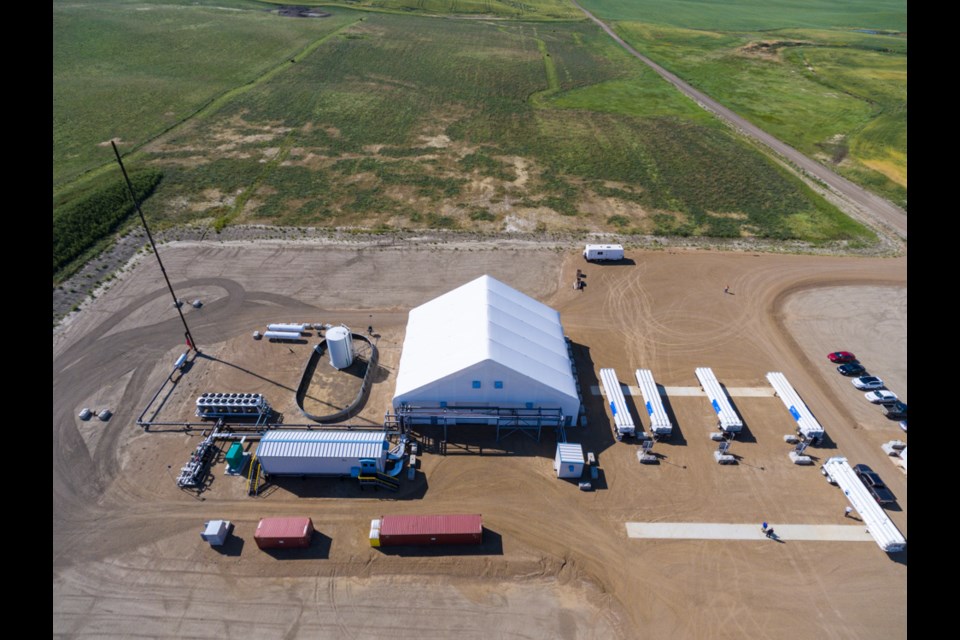Its hard to think about the future when the world has come crashing down around us. Like me, you are probably hunkered down in your home, watching the news, and keeping your family safe thoughts.
Believe me when I say this: the fires will subside, the smoke will clear, and we will be able to lift our heads up and see the sun rise and shine again.
First, a grim viewpoint: we have suffered a “triple whammy” with the COVID-19 outbreak being the match that lit a pyre built up record-high business and consumer debt, over-inflated equity markets, and hyper-politicized resource markets. Now, we are suffering in the fire.
But here is an optimistic viewpoint: we live in a province that has what the world needs, and we know how to get it out. We know what fires do to fields and pastureland – they create blackened landscapes, but they also allow for new growth. As resource professionals, each one of us has a unique skill. Putting these skills back to work will get us all out of the ditch.
Enough “blue-sky B.S.”
First, here are three hard truths we must accept.
Hard Truth 1: We must stop having our future dictated by pipelines, Putins, and Saudi Princes. Oil is a big part of our economy, but I’ve had enough of the oil price rollercoaster. It’s time to ask, “What else can our drill bits do?”
Hard Truth 2: Yep, the world still lives on oil, however, North America and Europe is moving toward fossil fuel replacement. Let’s get over it and reframe our industry in terms of “Zero Net Carbon” and “Clean, Ethical Energy.”
Hard Truth 3: The financial mechanism that funded our energy projects may be broken for good, and with it, the dollars to fund our projects. New financial structures must be created.
What else can our drill bits do? Here are ten grassroots opportunities, each with the potential to create significant businesses and each capable of being “clean and green.”
Lithium
Some people have called lithium “white petroleum” because of its critical role in lithium-ion batteries. Saskatchewan oilfield brines may be one of the world’s largest resource of this element, and these brines can be produced using tools and technology at hand.
Potash
The province’s immense potash basin can easily host new modular potash selective solution mines, including fertilizer production facilities. The world’s people will continue to eat, despite what happens to the global marketplace.
Helium
Saskatchewan has proven deposits of helium, a gas that is critical for new 21st century processes ranging from synchrotrons, space vehicles, and quantum computers. Saskatchewan could become North America’s richest source of this vital element.
Carbon Dioxide
Helium is produced with its carrier gases of nitrogen and carbon dioxide. The province needs more carbon dioxide for enhanced oil recovery (EOR) over the next decade, and we can produce it here.
Nitrogen
Nitrogen associated with helium production can be recovered and made first into ammonia and then into urea fertilizer. We use quite a bit of this commodity, so let’s make Saskatchewan anhydrous for Saskatchewan farmers.
Natural Gas
The province’s natural gas can be harnessed as a “home-grown” energy source and feedstock for potash mining, fertilizer production, power co-generation, and ammonia / urea production. The infrastructure is already in the ground.
Coal-to-Diesel
Converting Saskatchewan’s power generation from coal comes at a huge price. An alternate use for the now-stranded coal resource is to convert the coal to “clean and green” diesel fuel.
Oil Shale
Untapped deposits of oil shale located in the northeast of the Province are rich in aromatic hydrocarbons and can be processed to make synfuel, benzene, naphthalene, and other feedstock materials.
Geothermal Heat
The DEEP Project built near Estevan demonstrates the energy potential of deep rocks. This heat can be used for power generation and as a heat supplement to agriculture and processing businesses.
Subsalt Light Oil
Over 90 per cent of Saskatchewan’s drilling is to targets above a salt formation called the “Prairie Evaporite” however, proven light oil production is also found beneath this salt formation. Where are the new “subsalt” light oil pools?
Accept, Ask, Then Act
I am just a geologist so over the next weeks I will examine each of the above and maybe it will motivate some of you to rework your business plans to allow for diversification.
As to the fire we’re in now, lets remember this: deal with the fire that clears the land, but also think about the crops that must follow.
Steve Halabura is a professional geologist with 40 years experience looking at Saskatchewan rocks. He is also past president of the Association of Professional Engineers and Geoscientists of Saskatchewan (APEGS). Halabura can be reached at steveh@conceptforge.caor 1-306-220-7715.



